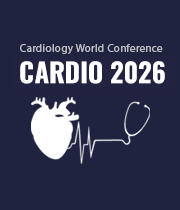Title : Global longitudinal strain predicts prolonged ICU stay after mitral valve surgery for severe mitral regurgitation
Abstract:
Background: Mitral regurgitation (MR) is one of the most common valvular heart diseases, affecting approximately 2–3% of the general population and rising to around 10% in individuals over 75 years. Surgical mitral valve (MV) intervention can markedly improve outcomes in severe MR. This study aimed to determine whether preoperative global longitudinal strain (GLS) can predict prolonged intensive care unit (ICU) stay in patients with severe MR undergoing MV surgery.
Methods: Fifty patients with severe degenerative MR scheduled for surgical MV replacement were prospectively studied. All patients underwent comprehensive echocardiography with speckle-tracking GLS assessment 2–3 days before surgery. Conventional metrics (including ejection fraction [EF]) and GLS values from the apical long-axis, 4-chamber, and 2-chamber views, as well as the global average, were recorded. The primary outcome was prolonged ICU stay, defined as >6 days in ICU postoperatively. Logistic regression and receiver operating characteristic (ROC) curve analyses were used to evaluate predictors of prolonged ICU stay.
Results: Fifteen patients (30%) had a prolonged ICU stay (>6 days), with a median ICU stay of 7 days (range 6–10). In contrast, the remaining 35 patients had a median ICU stay of 2 days (range 1–5). Preoperative EF ≤ 50% predicted prolonged ICU stay with an AUC of 0.781 (P = 0.001), corresponding to 66.7% sensitivity and 77.1% specificity. By comparison, GLS metrics were stronger predictors. For example, in the apical long-axis view, a GLS threshold > –14.8% (less negative) identified patients with prolonged ICU stays, yielding 86.7% sensitivity and 94.3% specificity (AUC = 0.935). Similarly, GLS cutoffs in the apical 4-chamber (> –15.3%, AUC = 0.899) and 2-chamber (> –15.3%, AUC = 0.937) views, as well as the global average GLS (> –15.8%, AUC = 0.916), were significant predictors (P < 0.001 for all). These GLS-based thresholds demonstrated high sensitivity (80–93%) and specificity (71–94%).
Conclusions: Both preoperative EF and GLS can identify patients at higher risk of prolonged ICU stay after MV surgery. However, GLS-based measures (i.e., less negative preoperative GLS values) showed greater sensitivity and specificity than EF. Incorporating GLS into preoperative assessment may improve risk stratification for postoperative ICU needs.
Keywords: Global Longitudinal Strain, Mitral Valve Surgery, Prolonged ICU Stay, Severe Mitral Regurgitation, Echocardiography



